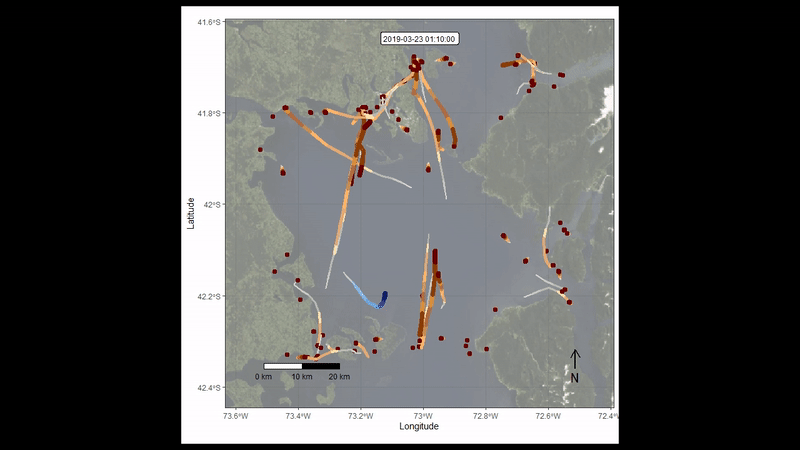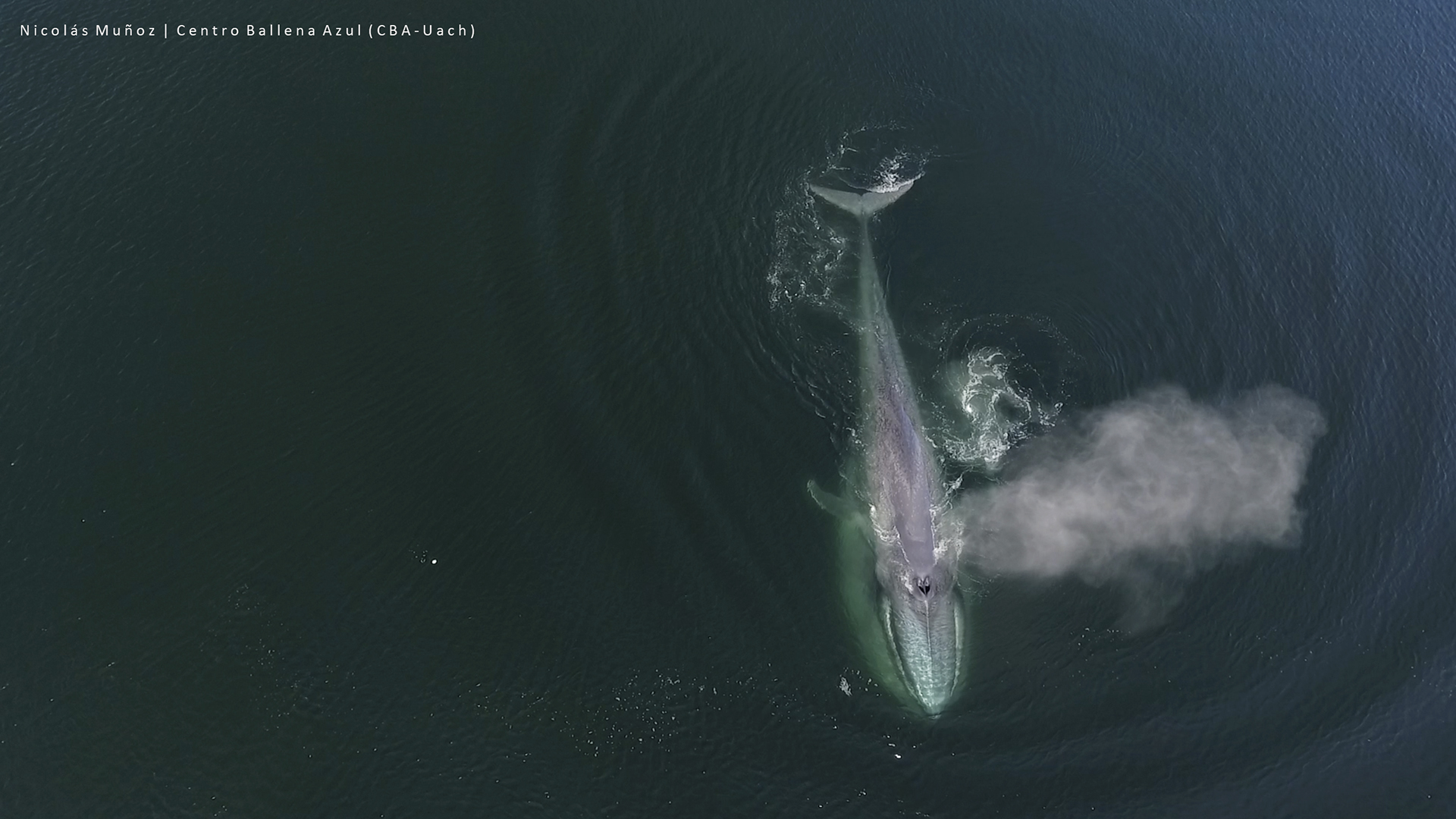Stressful animation shows blue whale dodging hundreds of ships while trying to feed
Watch a blue whale brave the hazards of extreme traffic.

A blue whale in Chile had a rough week, zigging and zagging at a hectic pace as it dodged moving ships in a busy gulf, as seen in a new and dizzying visualization of the behemoth’s attempt to feed without getting struck by any of the swiftly moving vessels nearby.
The animation is part of a new study detailing the dangers posed by ship traffic to blue whales (Balaenoptera musculus) in one of their main feeding areas in the South Pacific. Researchers discovered that blue whales there could encounter as many as 1,000 vessels per day during summer months, when the animals migrate to this ocean region to feed and care for their young calves.
Previously, the only available data for the risks of whale collisions with ships in the sea of northern Patagonia came from accounts of actual strikes, which were sometimes fatal for the whales. But such incidents are often not reported to local authorities or recorded in detail, "so we don't actually know how bad this problem is," said lead study author Luis Bedriñana‐Romano, creator of the data visualization and a researcher and doctoral candidate with the Austral University of Chile (AUC) in Valdivia.
World of Animals Annual: $22.99 at Magazines Direct
The animal kingdom is a fascinating, beautiful and complex world, but it faces an uncertain future. In the past few years, we’ve seen Japan resume whaling and scientists warn that the next decade could prove pivotal for the Earth’s environment and its inhabitants. This annual explores some of the threats faced by 25 of the world’s most endangered creatures and meets the animals that owe their continued existence to the vital Endangered Species Act of 1973.
Related: Whale album: Giants of the deep
Over the past 16 years, scientists with AUC and Chile's Blue Whale Center have collected satellite data from more than 20 tagged blue whales, tracking their migration routes and feeding behavior. In the new study, the researchers analyzed whale movement data alongside traffic data for ocean vessels.
By using movement data to build predictive computer models, the researchers found that whales could be dodging up to 700 aquaculture vessels — ships used for transporting staff and supplies — and possibly hundreds of other types of ships, on a daily basis. These interactions took place between waters near Puerto Montt and in the Taitao Peninsula in southern Chile, where blue whales habitually gather to feed.
In the animation, a blue shape displays the path of a single blue whale in Chile's Gulf of Ancud, between March 22 and March 29, 2019. The moving shapes that the whale is trying to avoid are vessels from the Chilean aquaculture fleet.
Get the world’s most fascinating discoveries delivered straight to your inbox.
"What is important here is to show a glimpse of the vessel density [that] whales are exposed to," Bedriñana‐Romano told Live Science in an email. However, tracking data for many of the region's boats wasn't available to the study authors. The animation therefore shows only vessels in a single fleet, and the actual number of boats that whales avoid in a given day is likely higher.
"We know we are underestimating the risk," Bedriñana‐Romano said. "However, more than 83% of analyzed vessels belonged to the aquaculture fleet so we know this is the sole industry shaping marine traffic in the area."
This new map of high-risk areas for whales will help officials to develop conservation strategies prioritizing the ocean regions most frequently visited by blue whales. Diverting vessel traffic — particularly aquaculture ships — will be a critical step for protecting this endangered marine species and safeguarding its ocean habitat, the study authors reported.
"Now, at least we know where to start looking for trouble, as we have defined the hotspots where interactions are likely to occur," Bedriñana‐Romano said.
The findings were published online Feb. 1 in the journal Scientific Reports.
Originally published on Live Science.

Mindy Weisberger is a science journalist and author of "Rise of the Zombie Bugs: The Surprising Science of Parasitic Mind-Control" (Hopkins Press). She formerly edited for Scholastic and was a channel editor and senior writer for Live Science. She has reported on general science, covering climate change, paleontology, biology and space. Mindy studied film at Columbia University; prior to LS, she produced, wrote and directed media for the American Museum of Natural History in NYC. Her videos about dinosaurs, astrophysics, biodiversity and evolution appear in museums and science centers worldwide, earning awards such as the CINE Golden Eagle and the Communicator Award of Excellence. Her writing has also appeared in Scientific American, The Washington Post, How It Works Magazine and CNN.




